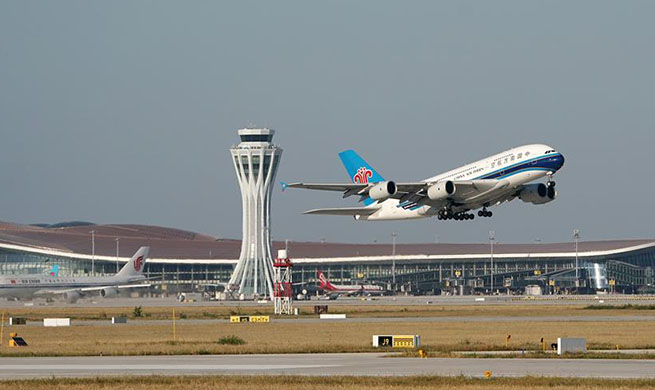HOUSTON, Sept. 25 (Xinhua) -- The U.S. Energy Information Administration (EIA) reported on Wednesday that the U.S. average retail gasoline price increased by more than 10 U.S. cents per gallon during the week ending Sept. 23, the largest weekly growth in two years.
This weekly increase was the largest since early September 2017, when the national average gasoline price rose 28 cents per gallon in the aftermath of Hurricane Harvey, according to the EIA report.
EIA surveys retail gasoline and diesel fuel stations each Monday morning.
EIA estimated that slightly more than half of the regular retail gasoline price in August 2019 was based on the price of crude oil.
Other components, such as taxes (18 percent of the price) and distribution and marketing costs and profits (17 percent), tend to fluctuate less than refining costs and profits (12 percent) and crude oil prices (53 percent).
Gasoline prices in the United States tend to follow price movements of the global crude oil benchmark Brent.
On Sept. 16, the first full day of trading following the attack on Saudi Arabia's key crude oil facitlities, Brent crude oil prices increased by 7.17 dollars per barrel from the previous trading day, the largest single-day increase in Brent crude oil prices in the past decade.
Because each barrel holds 42 gallons, each sustained 1 dollar per barrel change in the price of crude oil translates to upward pressure of 2.4 cents per gallon in the price of gasoline. According to EIA analysis, about half of a crude oil price change passes through to retail gasoline prices within two weeks.
About 80 percent of the crude oil price change passes through to gasoline prices within four weeks. The gasoline price pass-through tends to be more rapid when crude oil prices increase rather than when they decrease.













